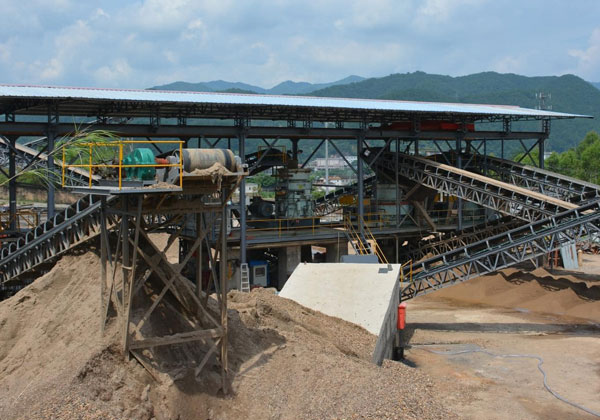River pebbles, formed naturally through water erosion over many years, are hard, wear-resistant, and chemically stable stones commonly found in riverbeds. Their aesthetic appeal and durability make them suitable for use in construction, landscaping, concrete production, and road base materials. To maximize their value, river pebbles are often processed into crushed stone. This article explores the process solutions for converting river pebbles into high-quality crushed stone, with a focus on efficiency, product quality, and environmental sustainability.

Characteristics of River Pebble as Raw Material
River pebbles generally possess the following properties:
-
Hardness: High Mohs hardness (typically 7–8), making them resistant to wear.
-
Density: Compact structure, ideal for heavy-duty applications.
-
Shape: Naturally rounded, which can be reshaped during crushing for specific applications.
-
Silica Content: High in quartz, making them ideal for concrete and high-strength aggregates.
Due to these characteristics, river pebbles require robust and efficient processing solutions.
Typical Process Flow for River Pebble Crushed Stone
A complete river pebble crushing plant involves multiple stages to ensure the final product meets the required specifications:
(1) Feeding
-
Equipment Used: Vibrating feeder or apron feeder
-
Function: Evenly feeds raw pebbles into the primary crusher, screening out fines to prevent blockages.
(2) Primary Crushing
-
Recommended Machine: Jaw crusher or heavy-duty impact crusher
-
Function: Crushes large pebbles (typically 200–400 mm) into smaller pieces (around 50–100 mm).
-
Note: Jaw crushers are preferred for their high capacity and durability.
(3) Secondary Crushing
-
Recommended Machine: Cone crusher or impact crusher
-
Function: Further reduces particle size to 10–40 mm depending on the required output.
-
Cone crushers are better for high-hardness stones like pebbles due to their superior wear resistance and consistent particle shape.
(4) Tertiary Crushing and Shaping (Optional)
-
Recommended Machine: Vertical shaft impact crusher (VSI)
-
Function: Shapes the aggregates and improves the grain size distribution; especially important for high-quality sand or premium concrete aggregates.
(5) Screening
-
Equipment Used: Vibrating screen
-
Function: Separates crushed material into different size fractions (e.g., 0–5 mm, 5–10 mm, 10–20 mm, etc.).
(6) Sand Washing (If required)
-
Equipment Used: Wheel sand washer or spiral sand washer
-
Function: Removes dust and impurities to enhance the cleanliness of the finished sand product.
Crushed River Pebble Product Applications
-
0–5 mm: Fine aggregate for concrete, manufactured sand for construction
-
5–10 mm / 10–20 mm: Road base material, drainage systems, decorative gravel
-
20–40 mm: Railway ballast, foundation backfill, landscaping
Process Design Considerations
To ensure the efficiency and economy of the river pebble crushing process, the following factors must be considered:
-
Hardness of Pebbles: Choose wear-resistant crushing equipment like cone crushers and VSI machines.
-
Required Output Size: Determine the need for tertiary crushing and shaping.
-
Production Capacity: Ensure equipment selection aligns with target output (e.g., 100–500 TPH).
-
Environmental Impact: Include dust suppression systems, noise control, and closed-circuit water systems for washing.
Recommended Equipment Configuration Example (200 TPH Line)
| Process Stage | Equipment |
|---|---|
| Feeding | GZD1100×4200 Vibrating Feeder |
| Primary Crushing | PE750×1060 Jaw Crusher |
| Secondary Crushing | HPT300 Cone Crusher |
| Tertiary Crushing | VSI9526 Sand Maker |
| Screening | 3YZS2160 Vibrating Screen |
| Sand Washing | XSD2610 Sand Washer (Optional) |
The river pebble crushing process requires a well-coordinated system of crushing, screening, and washing equipment tailored to the stone’s hardness and the desired product specifications. By implementing a proper process solution, operators can produce high-quality crushed stone products for use in a wide range of construction and infrastructure applications. With increasing demand for eco-friendly and efficient solutions, integrating energy-saving equipment and water recycling systems is also highly recommended.

